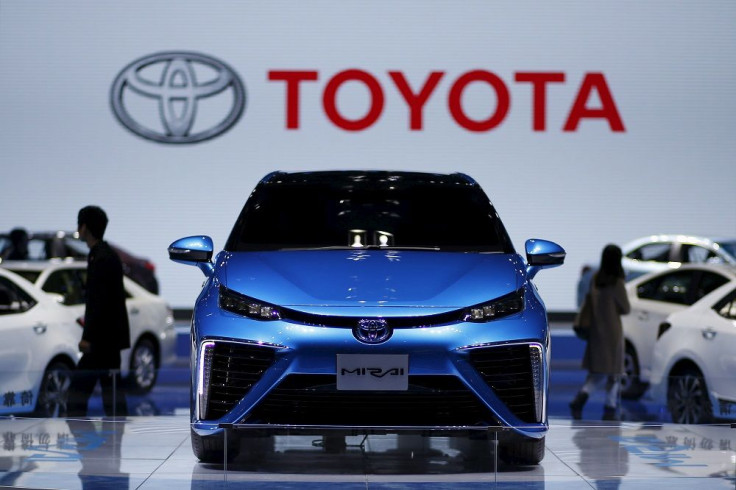Toyota Comes Out With World's First Hydrogen Car

Hoping for another game changer like the Prius, Toyota has introduced a new car model that it hopes will appeal to eco-conscious buyers and lure them away from electric cars. The Toyota Motor Company recently unveiled its latest model, the Toyota Mirai, the latest in what it hopes to be a green, or at least greener, automobile.
Fueled by hydrogen fuel cells, the Mirai is promising a range of almost 300 miles before replenishing the fuel. It is further than that of electric vehicles, which frequently drive fewer than 100 miles before needing a recharge, BBC reported.
“The Mirai uses the Toyota Fuel Cell System (TFCS), which features both fuel cell technology and hybrid technology, and includes Toyota's new proprietary FC Stack and high-pressure hydrogen tanks. The TFCS is more energy efficient than internal combustion engines and emits no CO2 or substances of concern (SOCs) when driven,” Toyota said in a press statement in 2014 when it announced its planned launch of the new hydrogen-fueled car model.
Fuel cells are basically a battery with a fuel supply. Hydrogen reacts with oxygen to generate an electrical current which, in turn, provides propulsion. This chemical reaction produces water as the sole emission. However, despite being a very common chemical, hydrogen needs to be extracted and refined before it can be used for fuel. According to environmentalists, hydrogen is a by-product of natural gas drilling, which effectively eliminates hydrogen as an eco-friendly choice.
With a starting price of over US$60,000, the Mirai is on par with conventional gas or diesel luxury vehicles, but is substantially less than that of the Tesla, starting at around $100,000. Tesla, a pure electric vehicle, has a range of approximately 265 miles between charges.
Despite optimism in automotive circles for the future of hydrogen-powered vehicles, many obstacles remain to their widespread use. Among these are the lack of infrastructure to provide for hydrogen refueling, the costs of the battery systems, and the weight that they can add to the vehicle. The Mirai is reported to weigh over 4,000 pounds, 600 pounds heavier than Toyota’s Camry.
To date, in most countries, there are no widespread hydrogen refilling stations. The State of California, the only state where the Mirai will be available, has fewer than one dozen.
The entry of more hydrogen fuel cells in automotive markets around the world sets up a natural competition with electric cars, especially those made by Tesla. The limited geographical range and long charging times of electric batteries has been a barrier to widespread adoption.
However, the use of hydrogen in cars may have a cheaper option. According to a new study publication developed by researchers at the Energy Department’s Lawrence Berkeley and Argonne National Labs, when nickel is combined with platinum in a new nanotechnology manufacturing process, the platinum needed for the catalysts in fuel cells is substantially reduced. Thus, the cost of the fuel cell becomes cheaper.
Amur Minerals Corporation (London AIM:AMC), a developing mineral exploration company focused on base metal projects in Russia’s far east can be one nickel explorer that could tap into this breakthrough in fuel cell technology. The company recently secured its mining license from the Russian government for its Kun-Manie project, allowing it to unearth an estimated 841,000 tonnes of nickel from the site.
To contact the writer, email: vittoriohernandez@yahoo.com





















